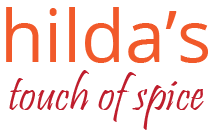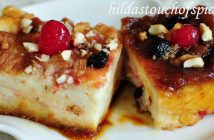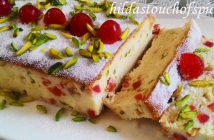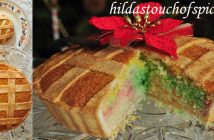In Konkannim, Kuswar means traditional & unique Christmas goodies which are prepared to serve & share with family, friends & neighbours at Christmas…
Kormolas or Phoolancho Kalyo (Flower Bud cookies) in Konkannim are sweet & crispy dough goodies which are a part of Kuswar. Sweetened dough is shaped into flower buds & deep fried to a pale pink color.
I remember vividly the hustle & bustle in our home before Christmas in my childhood. The traditional sweets were a must in our home. The thought of burning the midnight oil & the back breaking sessions of preparing kormolas, neurios, kulkuls, etc would be quite nerve wrecking… The good news was the active involvement & participation by family members & good neighbours.
Thanks to the joint family system which would bring everyone under one umbrella with good friends & neighbours pitching in to make it a community affair. The entire process of making traditional sweets would be a smooth sailing affair with each one not only actively participating but mingling with fun & laughter. There would be so much of joy & positive energy… While preparing sweets everyone would be singing & joking or playing music on the audio cassette recorder. Each day the whole group would hop to the other person’s home to prepare the sweets. This was a novel way of easing the burden of laborious task of preparing sweets.
Today, most people prefer picking sweets across the counter or ordering in advance from the commercial sources. Now many spend time in finding out from friends from where good homemade traditional & exquisite sweets are available. But there are also quite a few people who do take the trouble of making them at home. The most important thing to note is that at Christmas you will find people opt for the non- traditional goodies! I like to keep the tradition alive so I make few traditional sweets single handedly.
Today’s post is the popular recipe for Kormolas which is an integral part of Kuswar. I hope you take time out to make this wonderful Sweet Flower Bud Cookies to give the distinct flavor of Christmas this season. They taste good & also make your goodie tray pretty! Enjoy… 😀
Wishing each & every one ‘A Merry Christmas’ & a fun filled holiday season with family, friends & good food…
Ingredients :
- 2 cups Maida (Refined Flour)
- ¾ cup Sugar or to taste
- A pinch or two of Salt
- 3 tbsp. Ghee/Butter
- 1 tsp. Vanilla Essence
- Water/milk/Coconut Milk for kneading
- Vegetable Oil for deep frying
Procedure :
In a sufficiently large bow/food processor, combine together the flour, sugar & salt to taste.
Slightly melt the butter/ghee in a pan & add it to the above dry ingredients & mix well.
Knead the dough by adding a little water/milk/coconut milk at a time to prepare a soft, smooth & pliable dough.
Leave the dough covered with a damp cloth for about 15 mins. to rest.
First, dust the rolling board with some dry flour.
Take out a small fistful of dough at a time & roll it using a rolling pin into a square chapatti.
Cut into small squares (about 3 cm. squares).
Join opposite edges of the square cut outs of dough & twist to form a bud like shape & place on a tray dusted with some dry flour.
Use all the dough to make kormolas in this way.
Make sure to twist the edges well or they will open up while deep frying.
Heat a kadhai/wok with enough oil for deep frying.
Keep the heat on medium & deep fry the kormolas.
Maintain & adjust heat while deep frying or they will turn dark brown quickly from the outside & remain uncooked inside. You need to keep a watch & be alert while deep frying.
They should be lightly pink when thoroughly cooked.
Keep constantly turning them over so that they are evenly cooked.
Drain completely with a slotted spoon & transfer on to a tray lined with absorbent tissue.
Remember they will continue to cook for a few minutes even after they are removed from the kadhai/wok.
Fry all kormolas in this way.
After they cool thoroughly, store them in an airtight container.
Serve & enjoy at Christmas or eat whenever you feel like relishing them.










1 Comment
i will definitely try it tis Xmas, but do we have to use eggs